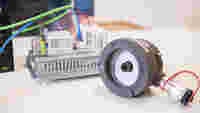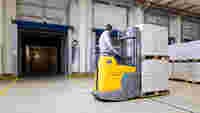Documenting these processes requires technology and logic. For example, the front and rear license plate of the empty truck need to be detected. The truck is then automatically associated with the appropriate ERP order and guided to the loading dock reserved for it. In the loading terminal as well, cameras at the appropriate points on the ramp and forklifts make sure that the images generated contain significant information. The cameras and their software identify the forklift, recognize when it drives in and out and then save an image of the secure loading process.
Then the interface to the ERP system saves the images in the user’s merchandise and logistics management system, ensure they can be located when needed.
The biggest challenge for the camera and the software lies in making sure the images generated contain useful information. For this purpose, the program performs countless automatic checks in the background. To ensure usable images in any lighting situation in the truck, the camera needs recognize that it is not in the glare of the sun or any other light source and that temperature fluctuations haven’t caused fogging on the lens.
Also, the software programming needs to ensure that the system finds the right moment for recording. The second the software presses the virtual record button, there can’t be a forklift in the way or a recognizable person in the image. In particularly critical applications, the system also provides recognition of individual containers – via barcode for example – in order to guarantee the traceability of the individual partial deliveries.






